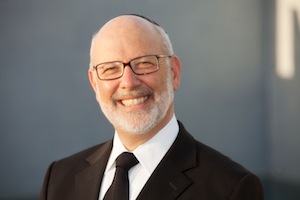When we are too quick to ease our discomfort, we may miss out on "hearing" potentially life-changing messages. If we accept that nothing is coincidental, (the very definition of Bitachon,) then discomfort is sent to us not just as an irritation but to urge us to make some life-style modification. When we suffer a headache, rather than just popping another pill we may do better evaluating our lifestyles and sources of stress. If we suffer from heartburn we could either take antacid medication and carry life on as normal, or examine our eating habits and make permanent changes to our diets.
Sometimes the linkages between pain or illness and their causes are less obvious than headaches and heartburn. Recent work in new age healing has highlighted these connections. Louise L. Hay, a woman who cured her own cancer, has popularized some of that work. She believes that "all disease comes from a state of unforgiveness". [1]Unforgiveness means an attachment to negative experiences of the past. Those experiences may be things others did to us that we haven’t let go of, or things we did that we have not let go of by means of proper Teshuva. Her view is not terribly far from the Chazal that there is no suffering without sin.[2] Discomfort or disease therefore, is a calling from Hashem for us to do something different. That is why the Tana debei Eliyahu Rabbah states: Discomfort only comes to a person, for their own good.
After being diagnosed with cancer, Louise Hay writes, "If I had the operation to remove the cancer and also cured the mental pattern that was causing the cancer, then it would not return. If cancer or any other illness returns, I do not believe it is because they did not ‘get it all out,’ but rather that the patient has made no mental change. He or she just recreates the same illness, perhaps in a different part of the body."[3]
Nega: Being "touched" by G-d in a discomforting way
It is not strange therefore, that the term used for the particular diseases referred to in our Parshiot, is nega, a word whose root is the same as naga ("touch"). A person who contracts a nega has been "touched" by G-d. It is a form of divine and privileged communication. The individual and the nation need to be on a high spiritual level to be worthy of such communication – there is blessing even in discomfort when it is sent to us for our own good as the Tana debei Eliyahu says. This explains the role of the Kohen in the process: The affected person needs to see his or her nega as a disease needing spiritual and or moral treatment, not medical treatment. The "physician" is the Kohen, G-d’s representative, not a doctor.
Nega and Oneg
In Kabalah there is a concept that often by moving the first letter of a word to the back of that word (or vice-versa), the word takes on an opposite meaning.[4] The Sefer Yetzira[5] for example, says "there is nothing in goodness above oneg (celebrate), and nothing in evil beneath nega (plague). By moving the ayin of nega to the front of the word, we have oneg – pleasure. Nega does not mean a mere visual discoloration. Nega means marked physical discomfort noticeable by others.[6] The opposite of such discomfort that repels others, is celebration, oneg, that attracts others.
Linear and Circular Opposites
But let us go a step deeper in our understanding of the SeferYetzirah: There are two kinds of opposites; linear opposites and circular opposites. The two ends of a straight line are further from one another than any other two points on that line. That is linear opposite. However, the beginning and the end of a circle are the two closest points on the circle. This is the circular opposite to which theSefer Yetzira refers when it talks about moving the front letter to the back of a word.
Pain and Pleasure – Paradoxical Neighbors
In the "two dimensional" secular world, oneg and nega (celebration or pleasure, and discomfort) are linear opposites very far from one another. In the world governed by the divine third dimension, onegand nega are circular opposites and therefore ever so close to one another. There is celebration even in nega. Even in the discomfort of the nega, there is the sensual touch of G-d Himself; a paradoxical cause for celebration because Hashem values the sufferer sufficiently to communicate with him and touch him. In meditation technique, staying in the moment with the pain and observing it, is a part of the experience of life and therefore of the very management of that pain. Any intimate experience of G-d, including a discomforting one, is Oneg, as the prophet Yechezkeil comments: "then, you will celebrate with G-d".[7]
Try it: When you are stricken with discomfort, inconvenience or pain, whether physical, emotional or social, stay with that feeling and go deep inside yourself to find the inner cause of that uncomfortable feeling. What attitude needs letting go of, what frustration needs to be eased, what anger needs to be calmed, or what hatred needs to be forgiven? Often you will find as I have, that when you have identified the inner cause of the pain rather than its symptomatic manifestation, you automatically address it, and the pain begins to subside. Only when we "get" the message, can the healing start.








